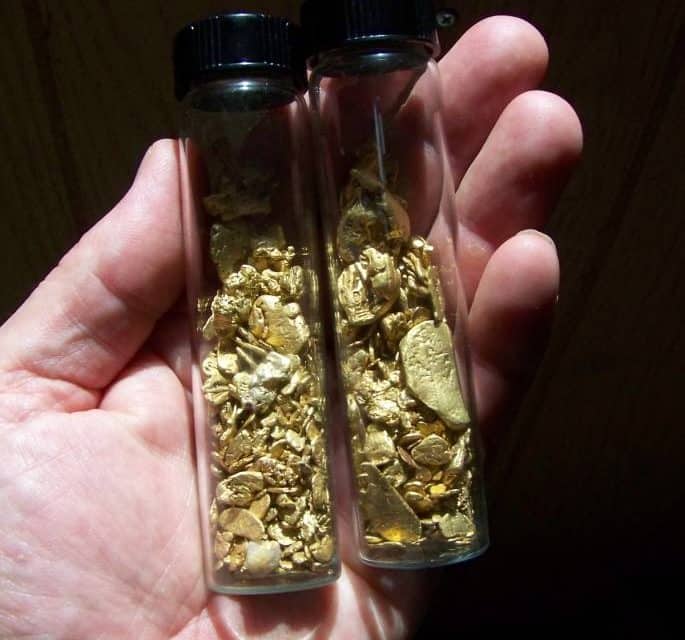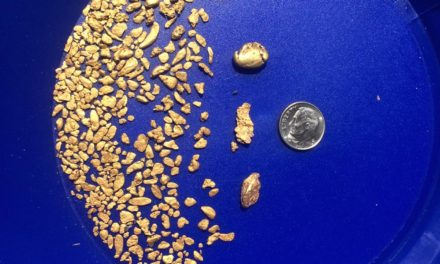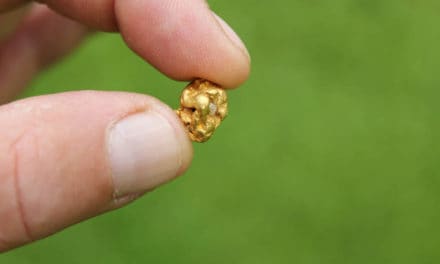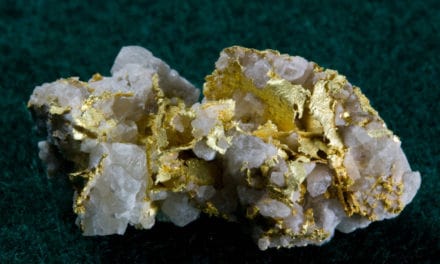The Right to Mine
By Charles Watson
Chief Geologist, Advanced Geologic
There’s considerable confusion about mining laws today, and even a question if people are still allowed to prospect for gold. The confusion is paramount in California and Oregon, yet is multi-state prolific across the western states.
Many question come to mind for the average weekend warrior and miner. What can they do? Where can they go? When can they do it? How much will it cost? Do they need permits?
Understandingly, mining tends to cause surface disturbance and with many concerns about environmental impacts, there is a long list of laws that have been created that leave many people wondering if they can even prospect for gold anymore.
Let’s look at the foundation. In general, it is your constitutional right as an American citizen to explore, mine, develop, and even purchase federal lands if valuable minerals are found. This right was founded in the 1872 Mining Act and can only be changed by an act of Congress. However, it is the methods by which one can explore or develop the valuable minerals that has caused so much confusion.
Valuable minerals are found in the bedrock (quartz and other types rocks) or within the gravel deposits in the streams. These are called lode or placer deposits. The prospector must first find valuable minerals by digging in those deposits. This creates a surface disturbance that is classified as “significant” or “non-significant.” This is the dividing line as to what is required by law. It is subjective and often a gray area that creates more confusion that it satisfies.
Remember, our government and laws of this country encouraged the exploitation and development of the lands in order to build and sustain a strong economy. Farming, ranching, logging, and mining were used to build this nation to what it is today.
Uncontrolled and careless acts have happened and in some cases, caused dire consequences and even loss of life. Over grazing, over logging, abandoned mines, and acid mine waste have caused large-scale environmental problems that are legendary. Many Hollywood movies depict the miner as a ruthless person who will do anything to get at the minerals. For example, the recent movie “Avatar” used a greedy mining company to wreak havoc on a planets’ valuable ecological and spiritual foundation – all to get at the minerals.
People relate to those concepts, hold them dear and close to their heart. Some consider the stoppage of any and all mining operations just to save Mother Earth. As our planet’s population grows and people create more and more disturbances, concerns run high as to what is acceptable and what is not. The term “significant” and in this case “significant disturbance” will have a different meaning to every individual. Remember, “beauty is in the eye of the beholder.”
As times have changed, laws have been created to protect life, property and the environment. One of the first environmental laws to limit mining stopped hydraulic mining whereby large water canons were used to wash down the Tertiary gravel deposits and collect the gold. The water was used to erode the deposits at substantial rates and although large quantities of gold were recovered, the volume of waste sediment choked the stream valleys causing substantial damage to down-valley communities and farmlands. The landmark 1886 Sawyer Decision prohibited this kind mining practice because of environmental degradation and economic loss to many while profiting few.
As with all hastily created knee-jerk reactionary laws, the Sawyer Decision was modified in 1892 to allow for hydraulic mining as long as the miner could keep the sediment on their claim or property. Some operations resumed but most were abandoned and the hydraulic mining infrastructures were scavenged.
In recent years in-stream suction dredge mining has been the pinnacle of mining controversy. Since gold is the heaviest item in the stream, it often travels on or close to bedrock. Suction dredges have been used to vacuum the sediment from the bedrock to recover the gold. It’s very efficient, has a relatively small impact area and causes little to no environmental damage. In fact, there are several environmental benefits including creating deep holes in the stream sediment where cold water collects and provides shelter to fish in the hot summer days and recovers more than 98% of the mercury in the stream, which was also heavy and collects on the bottom of the stream.
Controversy developed when a small group of people convinced a whole population, including legislators and congressmen, that suction dredging was harmful to the environment. They said it caused harmful turbidity (muddying) of the stream, stirred up the mercury, was harmful to wildlife, and was a public nuisance. To some this echoed to save the environment. To miners the data was just not there to support the allegations.
A number of court cases and millions of dollars have been spent to determine what the true facts are and whether suction dredging should be banned in California for environmental reasons, or if it would violate civil liberties and constitutional rights. The California Supreme Court joined a number of lawsuits both for and against a ban on suction dredging into one hearing that was held on June 1, 2016. Their decision is eminent and will likely have sweeping implications one way or another. However, it has left a statewide population unsure what they can do.
In the meantime, you can still prospect and mine for minerals. It is your constitutional right to do so. You should be a good steward of the land and if you think your activities are excessive it is likely someone else may feel that way too, including regulators who may have a different opinion of “significant disturbance.” Keep a small footprint and fill in your holes when you are done-do your own reclamation. Keep a clean site and pack out your trash. Keep in mind your prospecting and mining activities are just one facet of the Multiple Use Plan of federal lands.
Hand tools, pans and sluice boxes are prospecting tools. They allow you to easily prospect for gold and have a reasonably good time doing so, albeit on a small scale. No one is going to quit their job and earn a living panning for gold.
Highbankers, or pump assisted sluice boxes, can process more material and recover more gold, but can create turbidity of the stream. So if you use a highbanker, use some simple practices-don’t discharge directly into the stream, create a sediment catch basin, and reclaim the sediment discharge piles before you leave. There is an incorrect interpretation that operating a highbanker is illegal, but if you maintain the simple practices outlined above, you should be fine.
Regulations still provide you can use large-scale earth moving and processing equipment to mine and recover gold in California, however, these require permits. There again, the term of “significant disturbance” comes into play. The permits merely provide you have a mining plan to conduct the activities and a reclamation plan to put the land back the way it was when you are done. A reclamation bond is required to ensure that if you don’t do the reclamation, there are funds for regulators to have it done for you. My firm secures many of these permits every year, even in these days of uncertainty. We call it “green mining” but it is just being a good steward of the land.
If you go prospecting or mining and a regulator confronts you on what you are doing, be respectful, acknowledge their opinion of “significant disturbance” and understand they may be struggling with what is legal to do also. If you feel they are incorrect in their interpretation, there are appropriate avenues to discuss the situation and confrontation is never the preferred option. If you feel they are wrong and need professional help, feel free to contact my firm for guidance. We know the mining law very well and can often make a phone call or send a few emails to quickly get your mining activities back on track.
Minerals are important to our society. They provide the metal for our cars, planes, buildings and many other things. The precious metals and rare earths are used in the electronics in your cell phones, in life-saving medical equipment, aid in sending people to Mars and back. Without them we would not have the quality of life we enjoy today. It is also your constitutional right to explore, mine, develop, and even purchase federal lands if valuable minerals are found.
Spend quality time with your children and teach them the benefits of gold mining. Take them to the mountains and give them a chance to find some gold. It is a thrill when they find their first gold speck, flake or nugget. Once they do, they will be hooked forever. And who knows, maybe, just maybe, if they are a wee bit lucky… they too, will jump for joy, click their heels, and shout “Eureka! I found it!” and give their dad a big hug!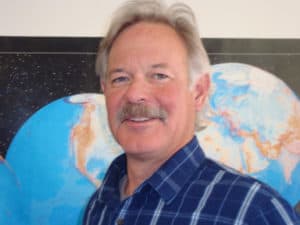
Charles P. Watson is the chief geologist at Advanced Geologic Exploration, Inc. located in Chester, California. He is an expert on gold exploration, mining, permitting, and a mining history buff as well. He can be reached at cwatson@advancedgeologic.com or at
Advanced Geologic locates and sells high quality gold mining claims. They also provide superior mining and geologic consulting, and can assist you with all your mining and permitting needs. The gold rush is on! Contact them and claim your fortune today!

